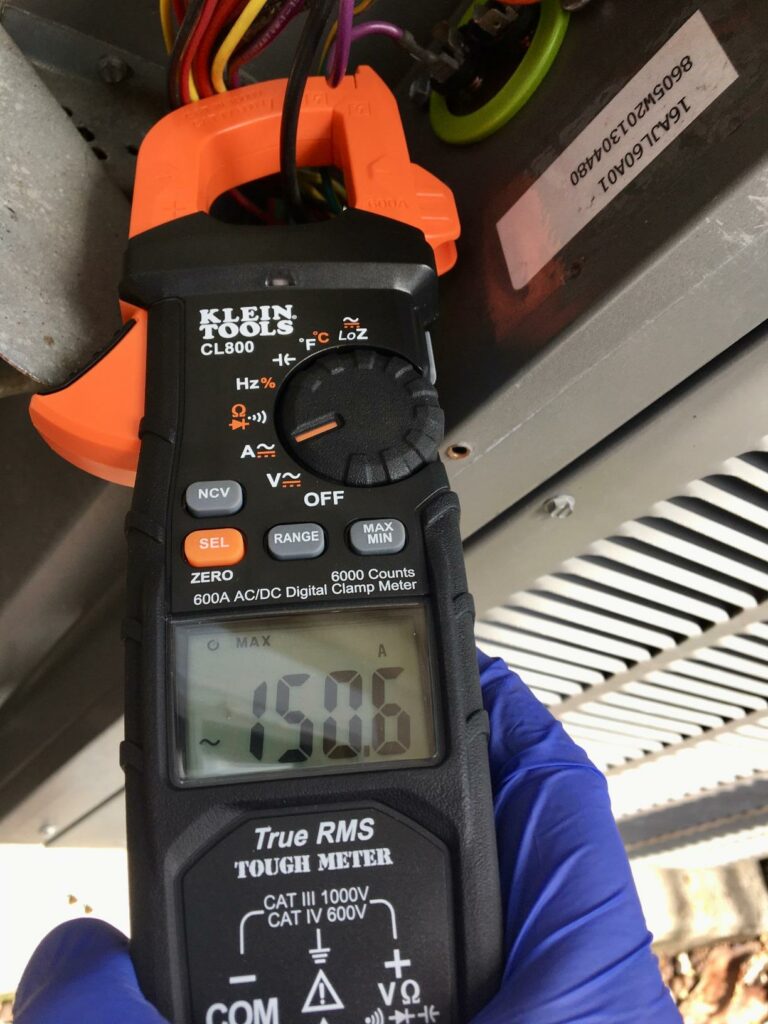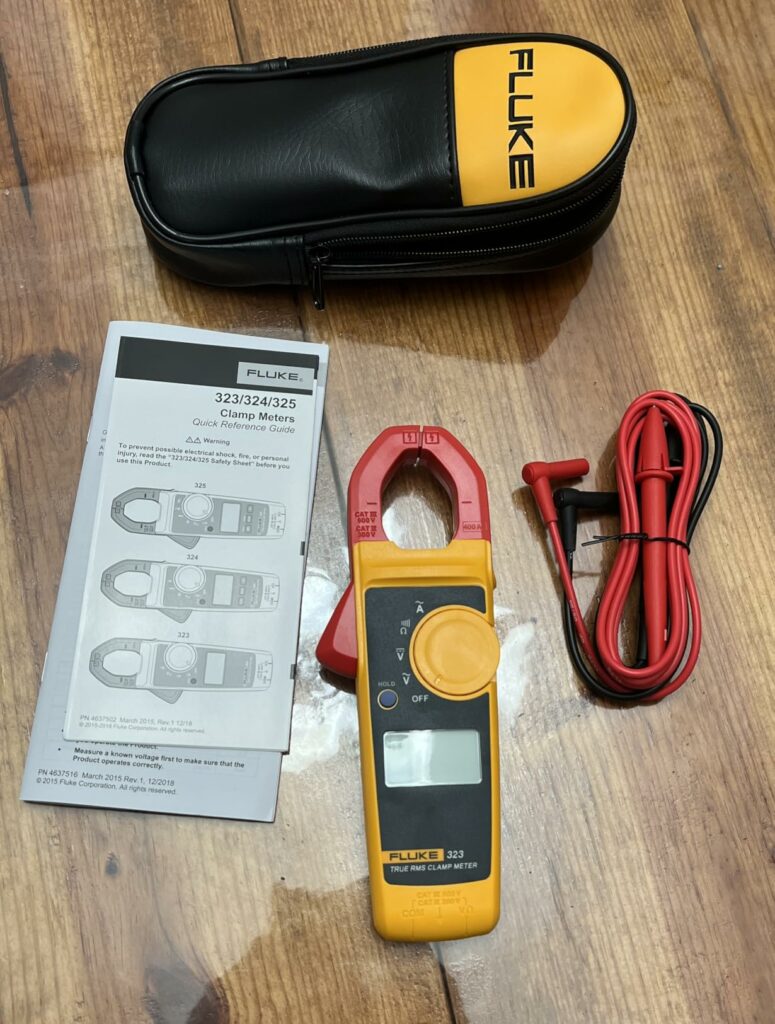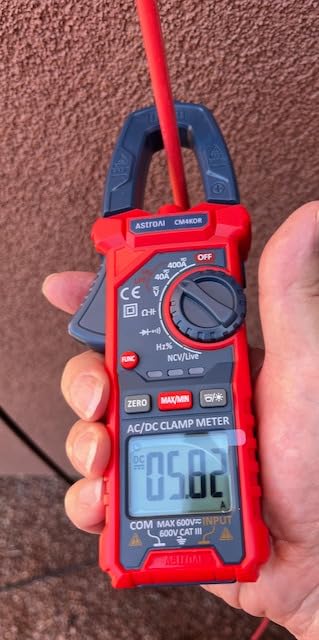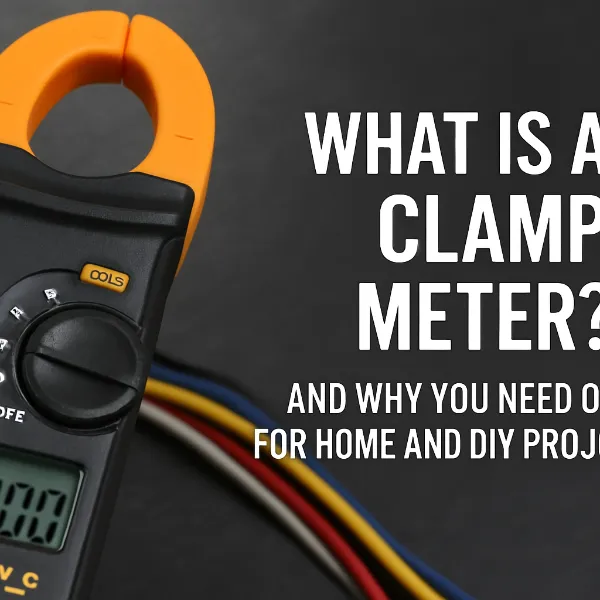1. Introduction
What is a clamp meter? If you’re working on home electrical projects or DIY repairs, understanding how to safely measure current is crucial. A clamp meter allows you to measure electric current without cutting or disconnecting wires — making it a must-have tool for homeowners and DIY enthusiasts.
Unlike traditional multimeters that require you to cut or disconnect a wire, a clamp meter allows you to measure the current simply by clamping around a conductor — no physical contact with live wires needed.
In this article, you’ll learn what a clamp meter is, why it’s an indispensable tool for homeowners and DIY enthusiasts, and how to choose the right one for your needs.
2. What is a Clamp Meter?
A clamp meter is an electrical testing tool that combines a basic digital multimeter with a current sensor.
Instead of inserting test probes into a circuit, the clamp portion of the tool simply clamps around a conductor — allowing it to measure the magnetic field generated by the current flowing through the wire.
➔ Key Concept:
- No need to cut or disconnect wires.
- Non-contact current measurement using magnetic induction.
Clamp Meter vs. Multimeter:
- Multimeter: Measures voltage, current, resistance directly via probes; often requires breaking the circuit.
- Clamp Meter: Measures current without contact; probes are still available for measuring voltage and resistance in many models.
3. Main Features of a Clamp Meter
Here’s what a modern clamp meter can typically do:
| Feature | Description |
|---|---|
| Current Measurement | Measure AC or DC current easily. |
| Voltage Measurement | Some models can measure both AC and DC voltage. |
| Resistance Testing | Check resistance in circuits and components. |
| Continuity Check | Verify whether a circuit is open or closed with an audible beep. |
| Advanced Functions | Higher-end models may include temperature, frequency, or power factor measurements. |
4. Why You Should Use a Clamp Meter
- Safer: No need to cut or strip wires; minimizes risk of electric shock.
- Faster: Quickly clamp and read without breaking the circuit.
- Versatile: Modern clamp meters handle multiple electrical measurements.
- User-friendly: Designed for professionals but intuitive enough for homeowners.
In short: If you need a quick, non-invasive way to measure current — you need a clamp meter!
5. Common Applications of Clamp Meters
Clamp meters aren’t just for electricians. They’re incredibly useful for:
- Checking home electrical systems (breaker panels, outlets).
- Testing HVAC equipment (heating, ventilation, air conditioning).
- Automotive diagnostics (measuring car battery or alternator output).
- Small-scale industrial maintenance (lighting systems, pumps, machinery).
6. How to Choose the Right Clamp Meter for Your Needs
Choosing the right clamp meter depends on a few key factors:
| Criteria | Why It Matters |
|---|---|
| AC, DC, or AC/DC Measurement | Make sure the meter matches the type of current you’ll measure. |
| Maximum Current Range | Choose a meter that can handle your system’s highest expected current (e.g., 400A, 600A, 1000A). |
| Accuracy | Look for True RMS models for higher accuracy in variable frequency systems. |
| Extra Features | Need voltage measurement? Temperature sensor? Continuity testing? |
| Jaw Opening Size | Ensure the clamp can fit around the thickest wires you’ll encounter. |
7. Top 3 Best Clamp Meters for DIY & Home Use
1. Klein Tools CL800 – Best Overall

- Measures AC/DC current, voltage, resistance, frequency, temperature.
- True RMS for better accuracy.
- Durable and well-built for heavy DIY use.
- ➔ View on Amazon
2. Fluke 323 – Best Accuracy

- Highly accurate current and voltage readings.
- Simple interface, very reliable.
- Perfect for homeowners who want “set and forget” reliability.
- ➔ View on Amazon
3. Etekcity Clamp Meter – Best Budget Pick

- Affordable and easy to use for beginners.
- Measures AC current, voltage, and resistance.
- Ideal for light-duty home electrical projects.
- ➔ View on Amazon
8. Tips for Using a Clamp Meter Safely
- Read the manual before first use.
- Clamp around one wire only — never clamp both live and neutral together.
- Wear protective gear (gloves, goggles) when necessary.
- Check the meter’s rated capacity before measuring high current.
9. Conclusion
A clamp meter is a must-have tool if you want to work safely and efficiently on home electrical projects. It gives you a quick, non-invasive way to measure current, and many models can also handle voltage, resistance, and even temperature readings.
If you want a hassle-free, safe, and reliable electrical measuring tool — a clamp meter is the smart choice.
FAQ About Clamp Meters
1. Can a clamp meter measure voltage?
Yes, many modern clamp meters can measure AC and DC voltage in addition to current. Always check the specifications before buying.
2. Do I need a True RMS clamp meter?
If you work with non-linear loads (like computers, LED lighting, variable frequency drives), a True RMS clamp meter is recommended for more accurate readings.
3. Can a clamp meter measure DC current?
Some clamp meters can measure DC current, but not all. Look specifically for models labeled “AC/DC current measurement” if you need this feature.
4. How accurate are clamp meters?
For general DIY and home use, clamp meters offer very good accuracy (within 2–3%). For professional-grade electrical work, high-end models like Fluke offer even better precision.
5. Is it safe to use a clamp meter on live wires?
Yes, one of the main advantages of clamp meters is measuring current safely without touching live wires. Just make sure you clamp around one conductor only, not both.
*Disclosure: This post contains affiliate links. If you buy through them, we may earn a small commission at no extra cost to you.*


Leave a Reply
You must be logged in to post a comment.